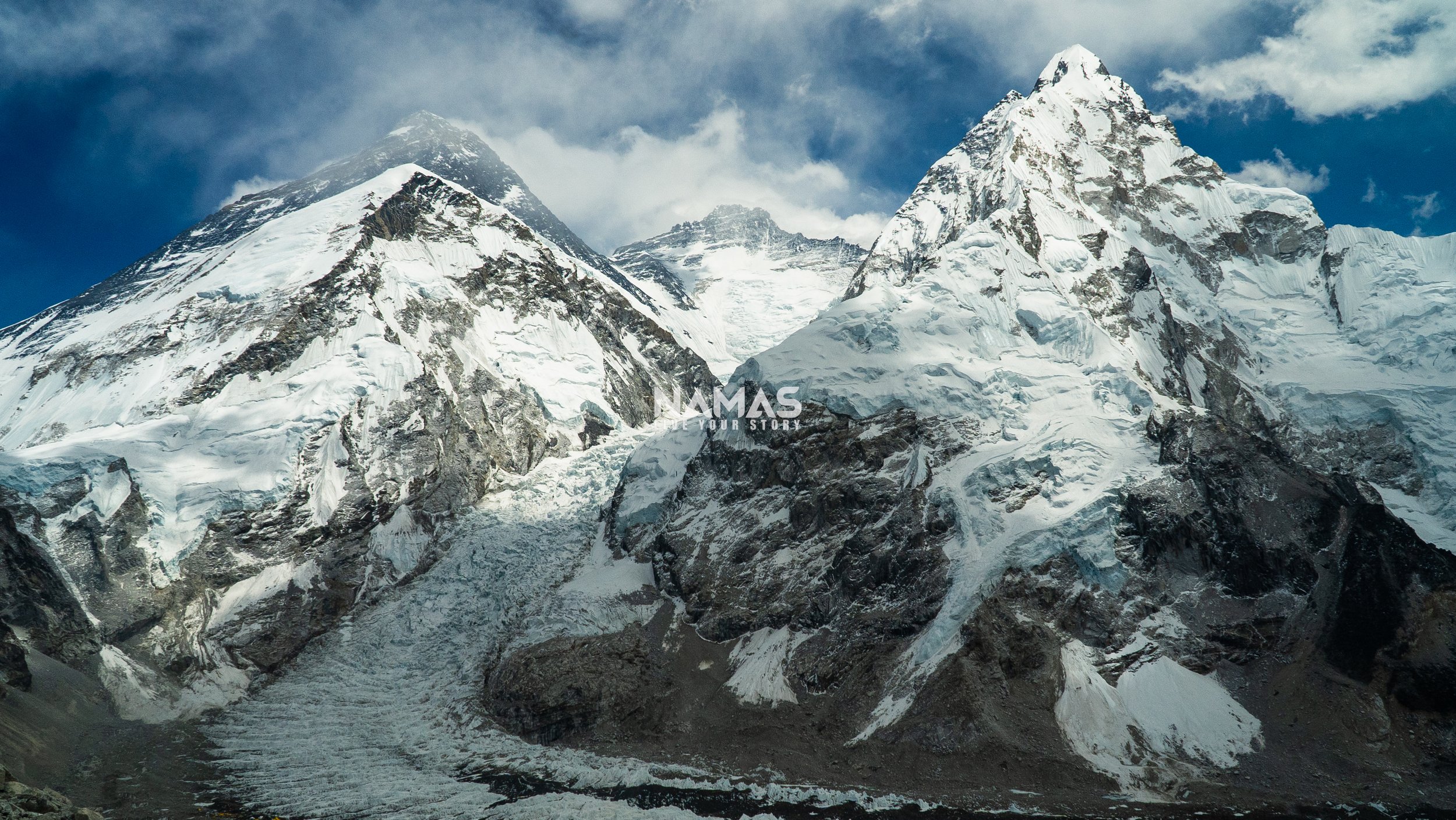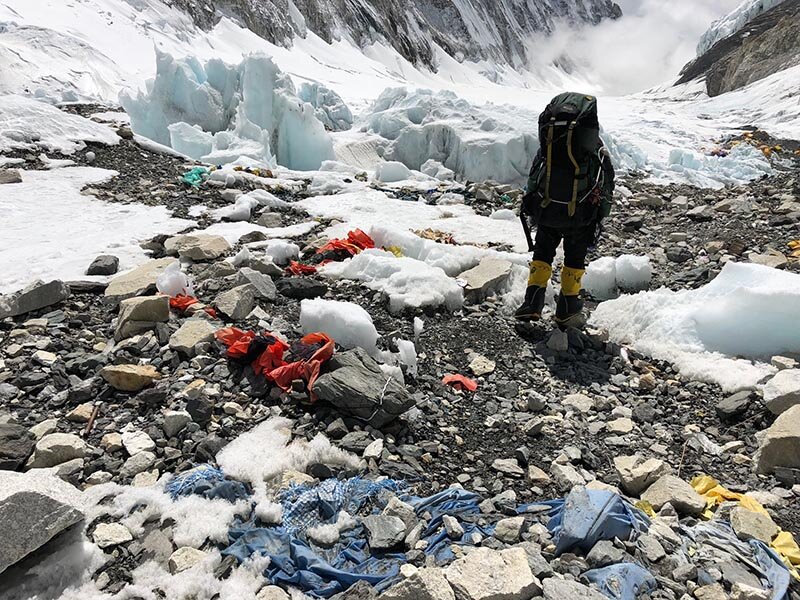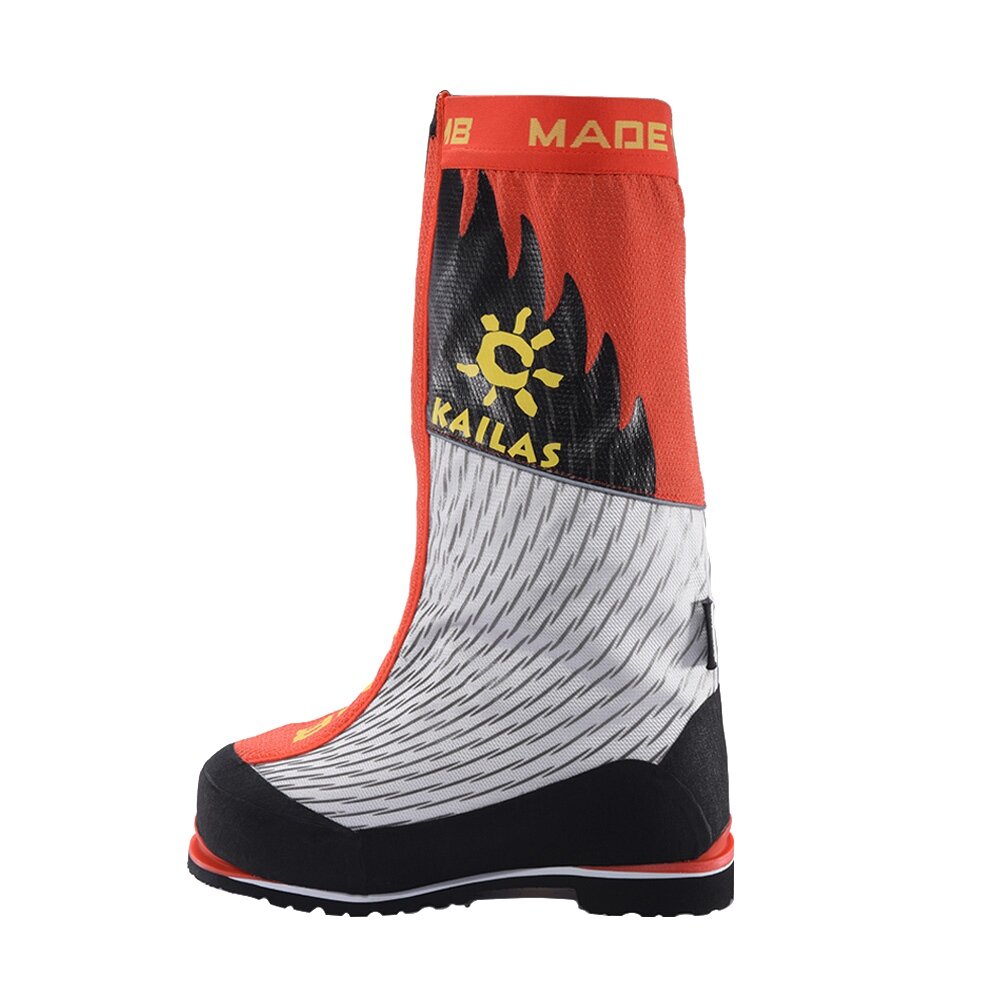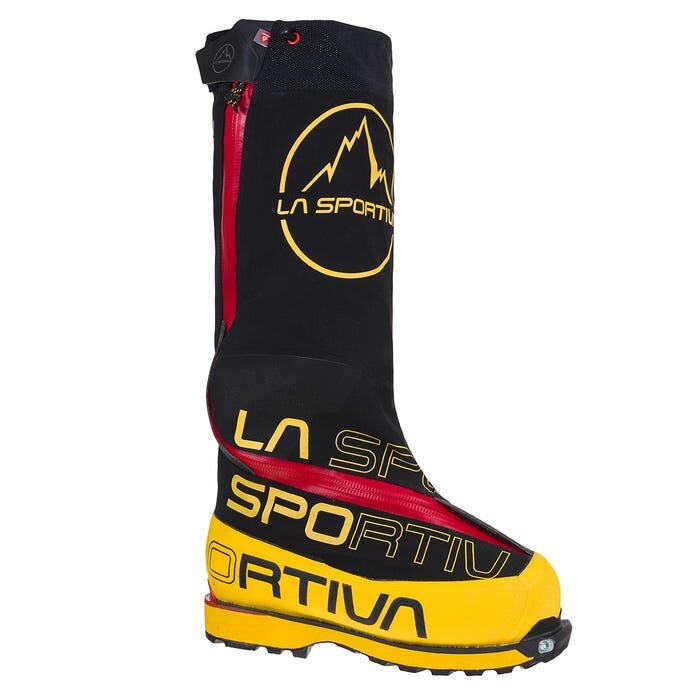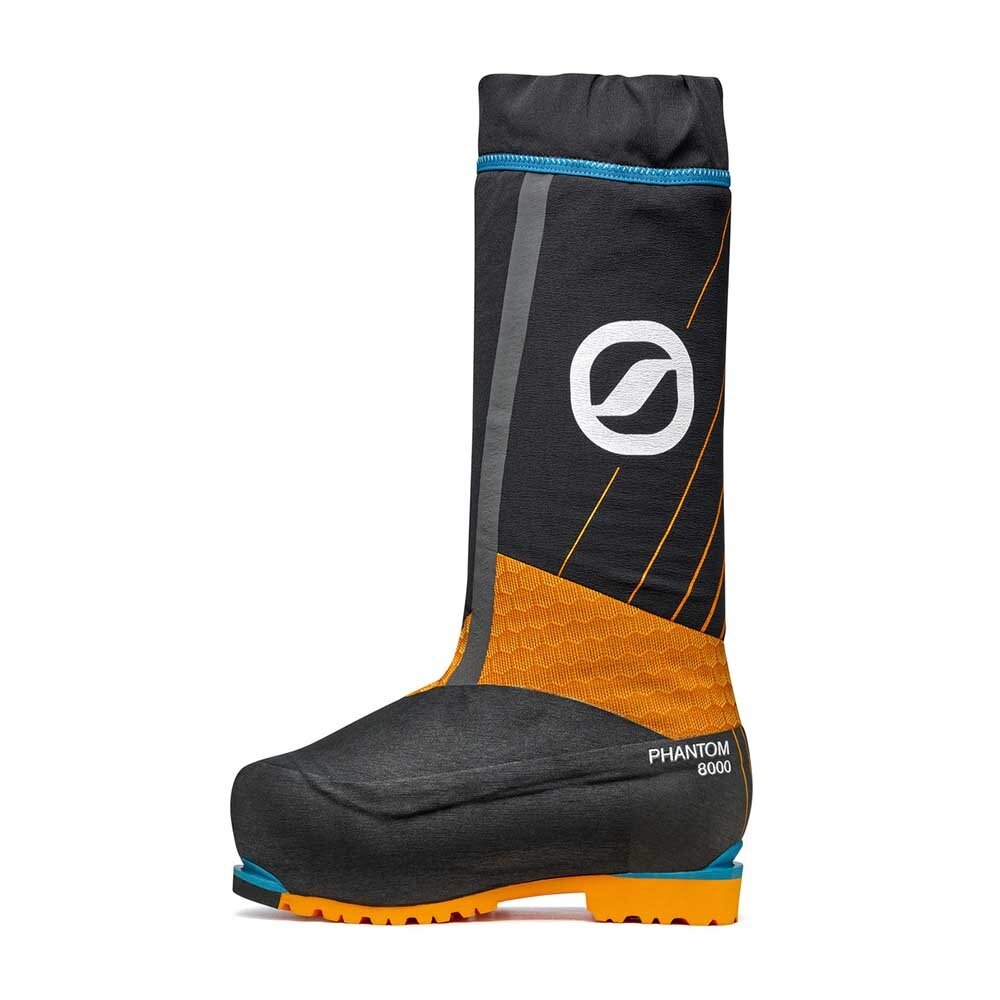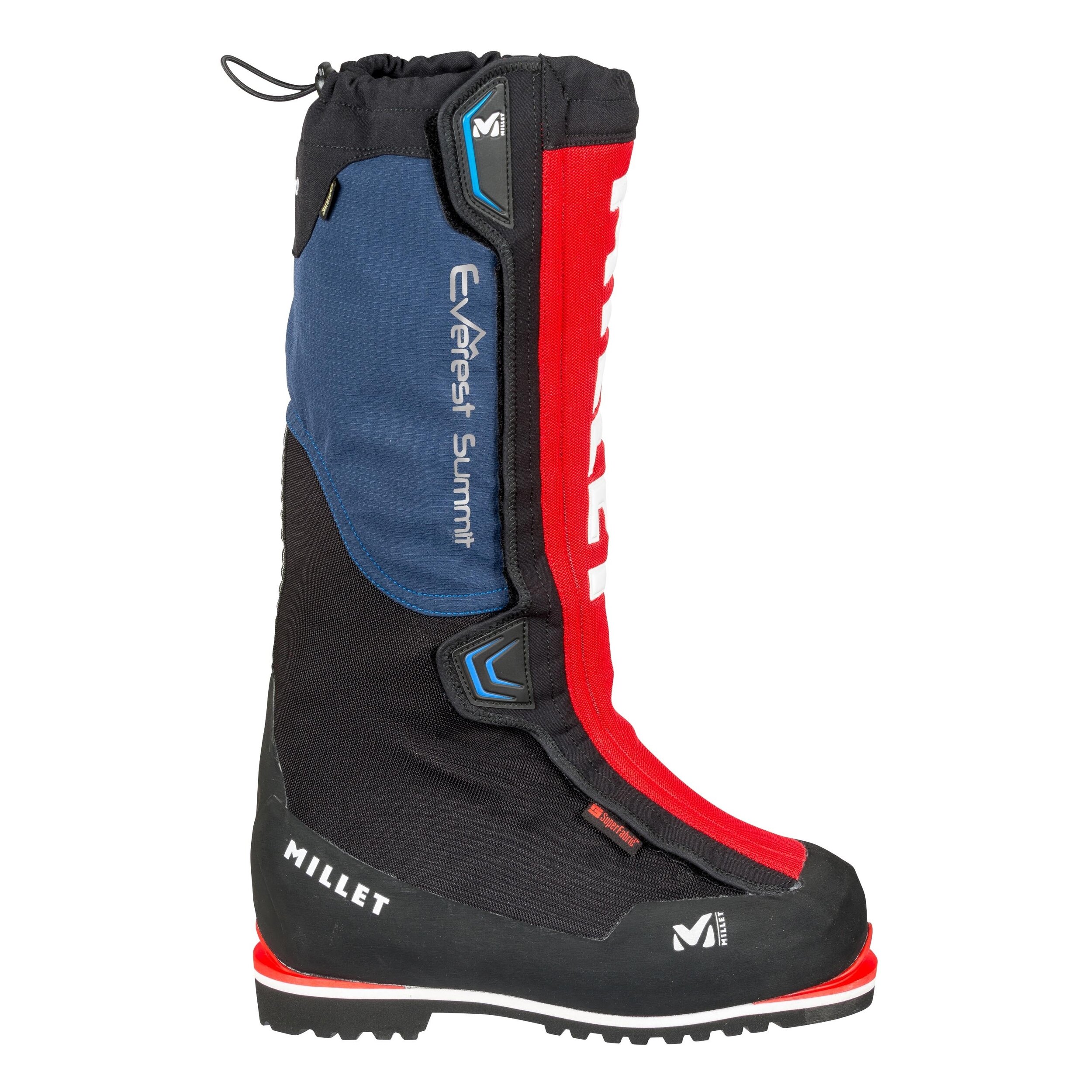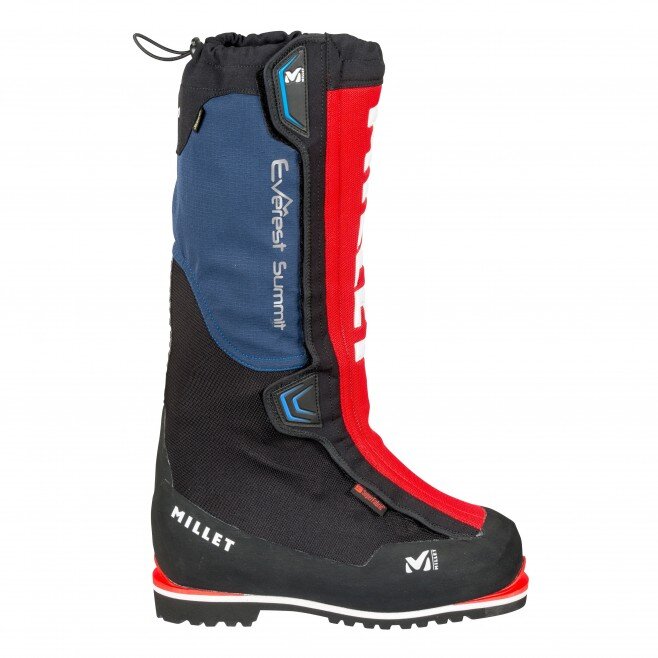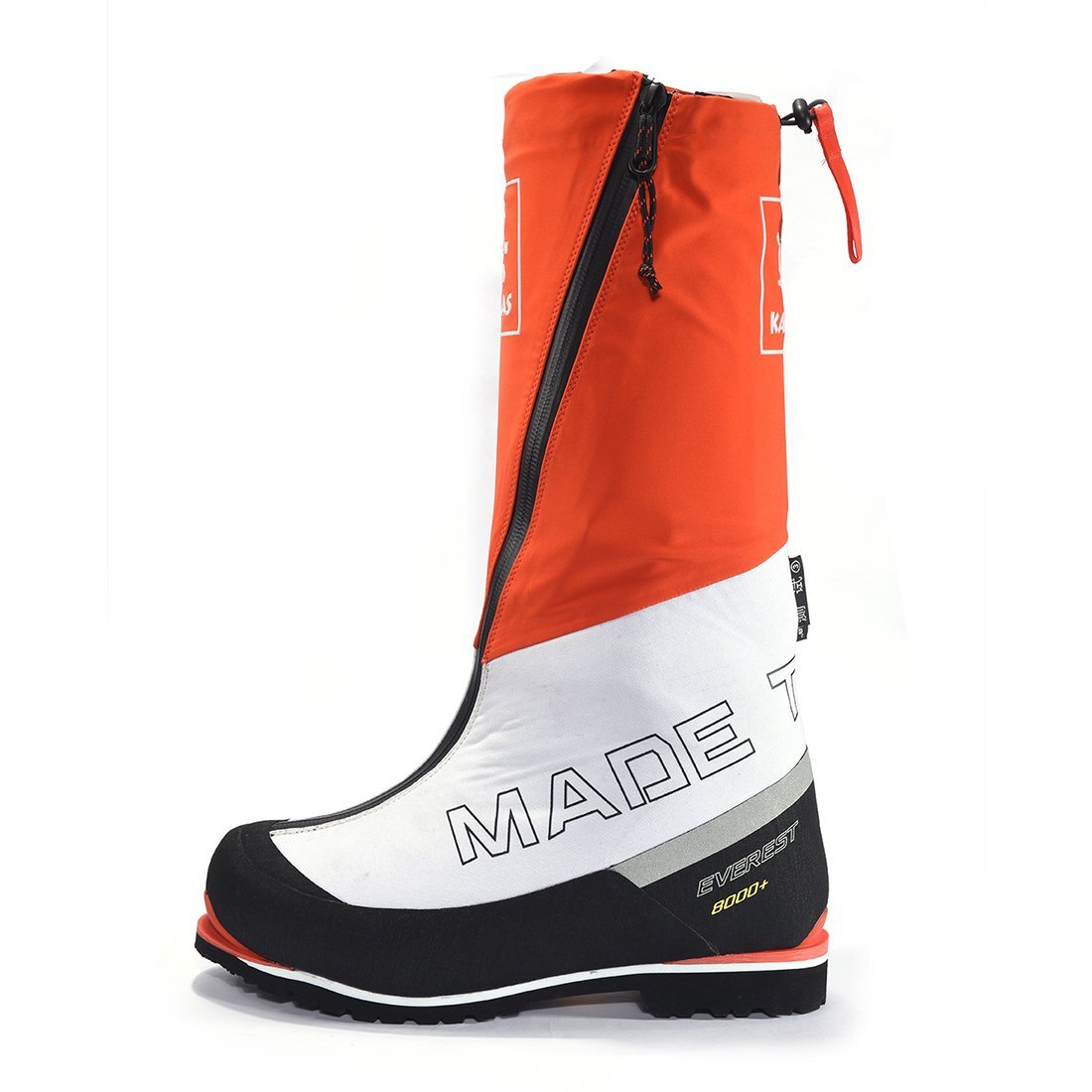Everything you need to know about MT. Everest 8848M Expedition
Note - Mt. Everest is officially a little higher. 8848.86M / 29,031.69FT (2020 new measurement)
1. When is the best time to climb Mt. Everest?
Spring (April-May) is the best time to climb Everest. All major commercial expeditions are organised during spring.
2. How much does Mt. Everest expedition cost? What does it include? How is Namas operating the expedition differently?
With our team, Namas Adventure team, your Everest expedition costs (website - click here). We provide premium high-quality all-inclusive peak climbing services. 🚁 Helicopter services to Lukla and rest day rotations BC - Namche Bazaar - BC and return to Lukla after your summit. Our team’s focus is your safety, successful summit, experiencing the local culture, and having fun. As a company, we are focused on our core values of being a responsible, ethical, and sustainable mountain adventure brand. Climbers do not have to worry about anything with our team and totally focus on their climbing holidays and fun times ahead.
List of what’s included in your booking.
IFMGA/NNMGA certified Guide leader
🚁 Shared helicotper Kathmandu to Lukla. BC to Kathmandu and to Kathmandu.
🚁 to Namche Bazzar for 3-4 days and fly back to BC
✈️ Kathmandu or Ramechap - Lukla - Kathmandu or Ramechap (for members without helicopter option)
$1000 Individual tip pool. (This is not a summit bonus tip) Tip pool will be fairly distributed among all Namas staff members. (Guides, porters, drivers, hotel security, and staff).Guest may personally hand in extra tips to our guides and porters)
Helicopter Charter From Kathmandu - Lukla. Base Camp - Namche Bazaar - BC. Base Camp - Lukla (Once the expedition ends)
Namas Branded merchandise (Down Jacket, Cap, Buff)
2:1 or 1:1 Guide/client ratio
1 Additional Sherpa Support for every 2 climbing members
Head chef and kitchen helpers (Helpers increase with the number of climbing team members)
2 nights before the expedition and 1 day after the expedition. Hotel in Kathmandu. Single room. (Should clients return early from their expedition, clients will be responsible for their extra Kathmandu hotel bookings)
All trekking and climbing permits (Khumbu Region Permit and TIMS)
All internal-local transportation to and from the trekking trailhead
Expedition tents, a single tent in Base Camps and shared in higher camps Brands Salewa, Mountain Hardwear, Samaya equipment, Kailas
8 or 16 Supplemental Oxygen Cylinders for client use
60 kgs personal weight
Meals for Camps 1 - 4
Burners and expedition equipment
Walkie-talkie/ Satellite phone
Breakfast, Lunch, and Dinner on trek and expedition days.
Lodge accommodation during the trek
Porters per guest
The arrival pick up and departure
Basic First aid kit
Welcome/Farewell leave Dinner
3. How is namas operating Mt. Everest expedition differently?
We will have a dedicated high-altitude porter(s) to transport our waste from Camps 1 and 2 to Base Camp. The client-leading Sherpa team will assist in bringing the waste down from Camps 3 and 4 to Camp 2 during rotations and the summit descent.
WAGBAG
All members are required to bring a wag bag for use at higher camps and to carry their wag bags down to Base Camp for proper disposal. While this might seem standard practice, not every company does this. We have been implementing this protocol since our first Everest expedition.
Once waste reaches Base Camp, it will be securely sealed and transported via yak down to the valley for proper disposal at a designated landfill site. We firmly believe that when conducting expedition operations in our mountains, we have a moral duty to protect the environment and keep it clean for future generations.
There is a growing concern about pollution and waste being left on the mountains. This is a legitimate concern that we share. In line with our commitment to sustainable values, we are implementing these waste management strategies and continuously improving our program to address this issue.
We appreciate your cooperation in maintaining the pristine condition of our beautiful mountains.
4. The first ascent and debate
Sir Edmund Hillary and Tenzing Norgay reached the summit on 29 May 1953 as part of the British expedition led by Lord John Hunt from the Nepal south col side. There is also the debate on whether George Mallory and Sandy Irvine reached the top of Everest from North side (tibet), on the final push of the 1924 expedition. They went missing soon after. No one knows whether they reached the top, a feat that, if proved, would rewrite climbing history.
5. The oldest and youngest person to climb Mt. Everest
The range of ages among those who have climbed Everest is staggering. The oldest person was Yuichiro Miura from Japan at 80 in 2013, while the youngest was American Jordan Romero at 13 in 2010.
A number of disabled climbers have reached the summit, including blind American Erik Weihenmayer in 2001 and double amputee Mark Inglis from New Zealand in 2006.
6. How many people have died on Everest?
Sadly 308 people have died on Everest, between 1922 and 2021. 165 have died on the Nepali side, while the remainder died on the Tibetan North side.
On 18 April 2014, 16 high-altitude local workers, including 13 Sherpas, were killed in the Khumbu Icefall below Camp 1, following a serac collapse on the mountain’s west shoulder. It was the worst single loss of life in the mountain’s history.
Despite this tragic loss of life, the fatality rate on Everest has been dropping in recent years, both for foreign climbers and hired high-altitude workers. According to the Himalayan Database – a useful resource for research on Everest – there were 61 deaths between 1950 and 1999 among high-altitude workers, a death rate of 1.52%. Between 2000 and 2014 there were 31 fatalities among high-altitude workers, a death rate of 0.57% – based on the number of journeys through the icefall.
7. Who holds the most Everest summit record?
Nepalese Sherpas hold the record for the most ascents. Kami Rita Sherpa X 29 summits and on second Ngima Nuru Sherpa X 22 summits.
8. How many climbing routes are there to climb Everest?
There are seventeen different routes to climb Everest. The two most famous and standard routes are South Col from Nepal and North Ridge from Tibet.
More detailed climbing routes on Alan Arnett's blog: https://www.alanarnette.com/blog/2017/12/28/comparing-the-routes-of-everest-2018-edition/
Image from Alan Arnett Blog site
9. What experience do climbers need to climb Mt. Everest? Are guides necessary to climb Mt. Everest?
If you are a total beginner then you will definitely want to check out our Road to Everest program.
Experiences - Previous high altitude climb of at least 1 X 7000M and 1 X 8000M+ of any alpine/mountaineering climbing experiences are absolutely necessary in order to climb Mt. Everest. It necessarily doesn’t have to be in Nepal but can be anywhere else in the world, although climbing in Nepal does help you get the wider understanding of climbing in Nepal. I.e.- local way of doing things, cultural perspective, bonding with local climbing leaders, their perspective on climbing big mountains etc. Climbers need to have good knowledge and experience of hiking/climbing using crampons on snow, ice, and steep surfaces. Be comfortable and proficient using a fixed rope to climb on steep and exposed sections. Climbers should be familiar with the use of climbing gears, basic rope techniques like tying safety knots and abseiling when coming down from the mountains and have the mental toughness to climb in cold and windy conditions.
For intermediate experience level climbers with no previous 7000M and 8000M climbing experience we highly suggest you build and gain the right experience before committing to climb Everest. Patience and right skill and experience is key and mostly the difference between death and survival in Everest.
Local Guides - By Nepalese law, when issuing permits for high altitude peaks above 6000M+ guides are a must. To issue a permit for Mt. Everest expedition process will have to go through a registered local company. However, if you are one of the experienced climbers with tons of climbing routes under your belt then there can be several routes that even local guides may not be able to climb. So even if you climbers want to explore new routes then taking a guide as a backup option would be a wise choice.
10. How many high camps are there on Mount Everest?
Strategically with Everest expedition we will have 4 high altitude camps.
Camp 1 (6,065M/19,900ft)
Camp 2 (6400M/20,997ft)
Camp 3 (7200M - 7500M/23,622+ft)
South Col or Camp 4 (7906M/25,938ft)
11. What is the best-acclimated itinerary for climbing Mt. Everest expedition?
Going slow and steady is the game when climbing extreme high altitude peaks. On extreme high altitude climbing expeditions it is imperative that climbers acclimatize properly so that the body is well-rested, adapted, and stronger to climb even higher. When we want to commit to climbing adventure at high altitude, slow and steady is the right way. Our itineraries have been refined and designed by our guides with years of climbing and guiding experiences.
On our Everest Expedition, our team will climb Lobuche East 6119M for their acclimatization/training peak and we will strategically conduct several rotations between Camp 1 - 3 to acclimatise properly.
During the main expedition, our base camp will be fully stationed and extra facilities will be available. We will conduct training day and several rotation to acclimatise during our expedition. More details are on our Everest climbing strategy.
Note - If you want to shorten your Everest (Express) itinerary to 45 days Namas team can make those arrangements.
12. What training is required/experience for Mt. Everest expedition climb? Can you suggest to me a training plan?
Everest is the ultimate climb for many and by no means is an easy climb and we require interested climbers to have a previous high altitude of at least 1X 7000M and 1X 8000M+ climbing anywhere in the world. Mountains are graded based on their technical and physical difficulties. To keep it short you will have to be at your absolute best physical fitness shape. For your training, it is very hard to mimic walking on ladders like the ones you will come across when crossing the crevasse in the ice fall or even the high altitudes.
We highly recommend focusing on endurance, core, and strength training. Any type of aerobic exercise, like long-distance running (20km+) 3 to 4 times a week, cycling (1 hour - 2 hours), hiking gaining elevation with 15-20kgs weights on are some of the suggested training. Another aspect you will want to focus is on strength building and muscle endurance training. Kettlebell routines are one of the best workout we can recommend. We advise you to schedule your training at least 6 - 12 months before your climbing departure. More on our training mountain expedition blog.
13. How hard is Mt. Everest climbing expedition?
Everest expedition is graded at E / 5 in difficulty. (Alpine/Fitness grading link).
We cannot stress enough but it’s very important climbers are mountain fit and strong before starting the expedition. In total, we will have 45 days of alpine climbing days and the climb will demand every ounce of your will, fitness, and awareness.
When we depart from Everest base camp our first objective challenge of navigating the great Khumbu icefall begins, mostly climbing on steep ice, jumaring, climbing on ladders just between the crevasse and ascending up the huge icefall to camp 1. As we go into higher elevation breathing will be challenging but with proper rotation acclimatization done ahead of time and by staying well hydrated and consuming enough nutrition, you should be able to cope with the altitude.
Summit day climb starts early with the goal to reach the summit or near to the summit before sunrise. This will be another challenging day mixed with a day of accomplishment. You can expect to climb around 16+ hours as you will have to summit and then descend back to camp 3 or camp 2 and then descend towards base camp the next day. Our teams will already have set up Everest base camp and the remaining 4 camps before client members reach there on their rotation and climbing days. Training walking on ladders, ice climbing and rotations are all meant to prepare you and acclimatize you for your summit. All your previous training of endurance and strength training should have prepared your body and mind to face these challenges.
What are the clothing and gears - boots required for Mt. Everest expedition climb (trekking and mountaineering)? Can I rent gears for Mt. Everest expedition climb?
Choosing the right gear is very important. We advise climbers not to make compromises on the quality of gears and clothing, and to pay attention to layer up comfortably as well. You will depend highly on your clothes to keep you warm enough for the dropping temperatures at nighttime which can go down to -20c /-40c. Please check our equipment blog for recommended clothing and gear.
Renting your gears in Nepal? The simple answer is NO. This is one of the most frequently asked questions mainly by beginner climbers. We have tested and tried several gears in Nepal and frankly, we do not recommend hiring here. We know it might seem like a huge amount of expenses to buy all the gears, but they are well worth it. You can even hire from the city you live in. Make sure they are the original products from well-known adventure gear companies. (North face, Mountain hardware, Kailas, etc.)
Boots for Everest Expedition
With better technologies, climbing shoes have improved every year. We highly recommend double-layered boots like Kailas Everest 8000M, La Sportiva Olympus Mons Cube, Scarpa 8000 phantom, Millet Everest summit GTX. It is wise to spend on good mountaineering boots, as so with all the gears that we have mentioned in this post above.
More 8000M boots link here (other media article)
14. What types of foods are available during Mt. Everest Expedition? Is clean water available and how much water intake is recommended? Hydration and nutrition
On your hike to the base camp, most of the foods are prepared in the tea houses. Once we reach base camp we will have our own base camp station. Our Everest base camp kitchen will be the best, where our amazing chef will prepare foods that will surprise you with what you can find at that altitude. Throughout your climbing period foods are prepared by our base camp kitchen staff members.
In the high altitudes, as the weather is extremely cold, your body will naturally want to reject food or avoid using energy on anything, which includes eating too. You might have to force yourself with the first few couple of bites and then eventually your body will start accepting the food. We also provide packed dried meals, so that clients have other options should they not want to eat what’s being cooked and served to them. We suggest all our clients to drink 4-6 l of water every day. Staying hydrated will also help you with acclimatizing properly. It’s best to take hydration tablets or filtration bottles with you.
Remember to avoid smoking and any alcohol intake. You might see our guiding leaders smoking or drinking but remember they are professionals and they have adapted very well to these environments compared to the climbers who go there just for adventure holidays.
15. What trip insurance will I need for Mt. Everest Expedition? Do I need helicopter evacuation to be included in my insurance cover?
No matter how prepared you are, you never know when or how things might go wrong. You might be sick suddenly or not that we wish but there might be some incident, you might suffer from altitude sickness or anything we can’t imagine yet. So, for these reasons, it is always good to have insurance cover. Our recommended Insurance companies (link)
We highly recommend Global Rescue as your insurance provider. Helicopter evacuation is our final emergency option and we do recommend you have one in your insurance, as it is the only means of transport in the Everest region. Our guides will assess your condition and examine if it is a major issue. If not, they will use their experience to motivate and push you through your trip. However, in case of emergency, helicopter evacuation will be called upon.
There is a procedure to follow when calling for emergency evacuation. We will call the insurance company hotline, get approval with your insurance reference number, and only then helicopters are sent to the distress call location. You will have to pay for the evacuation in Nepal from your own pocket but once you are back home you can claim your money back. Make sure you collect helicopter evacuation receipts, certified doctor’s approval letter. The insurance company will ask for this evidence to back up your claim. There was a huge helicopter scam in Nepal during 2018, so insurance companies are taking extra measures to stop this from happening. Our guides and staff members in Kathmandu will also remind you of this process during briefings.
16. Next climbing goals after Mt. Everest Expedition climbing
Everest expedition being one of the most sought out expedition is also one of the expedition with the most organised facilitated expedition. After completing your Everest expedition successfully there are are other mind boggling and challenging/adventure filled expedition which we can recommend.
1. Annapurna 1, 8091m
The iconic Annapurna 1, is known for being one of the difficult and dangerous 8000er to climb.
2. K2, 8611M
K2, another dangeours and difficult second highest peak in the world.
If you do have any more questions, please ask us below in the comment section or you can email us at bookings@namasadventure.com and our team will get back to you as soon as they can. Stay well. Challenge yourself. Dare great things and live your story.
Other related articles:
2021 Best Mountaineering Boots 7000 - 8000M - Namas Adventure
Extreme high altitude mountaineering is a geared heavy activity. Specialised gears are a must and mountaineering boots specially fit in that category. Mountaineering boots should be considered as an investment, as these boots are not only meant for climbing but serve other crucial functions to keep your feet protected so that the climber's feet are warm, safe, and performing. Let’s talk about the best boots for 7000M - 8000M+ level. How many or which boots depend on your personal preference. i.e one pair of boots for 7000m and the other pair for 8000M+ or just one pair for all expeditions. First, let’s discuss the important functional features of the boots and the rest can come later. Below are 2021’s best extreme high altitude boots for 7000M- 8000M+ level. So if you are planning expeditions like Baruntse, Manaslu, Ama Dablam, Himlung Himal, or Mt. Everest these are the boots we highly recommend. First, let us help you be clear with the category of boot and crampons needed for this type of expedition.
Mountaineering boots and crampon category (More on Boots category blog post):
B3 Boots (7000M & 8000M+)
B3 boots are designed for extreme mountaineering. This category of boots has the stiffest soles and uppers available, providing lateral and medial support for front pointing, step-kicking, and traversing on steep terrain giving climbers a high level of traction for the most challenging conditions. This category includes high-altitude double boots as well as lighter technical climbing models. These boots allow both heels and toe welts to allow fitting of C2 - C3 crampons to take advantage of the easy step-in attachment system of heel clip and toe bar. B3 boots are the best when it comes to innovations and standards of high-altitude mountaineering boots.
Insulations
Double
As the name suggests double boots feature a structured outer boot combined with an insulating liner boot that can be removed. They are generally slightly heavier than single boots and are bulkier, but they do offer that extra level of warmth. They can also be easier to dry in more remote locations, but the inner booties can be worn while you are tucked inside your sleeping bags.
Triple
This is a hybrid mountaineering boot and is becoming increasingly popular amongst both the makers and climbers when it comes to extreme mountaineering. Perhaps more similar to a single boot with the addition of an integrated gaiter for extra warmth and snow protection, this also helps to keep them drier than a single boot. If they do become wet, you can’t dry them as easily as you can a double boot.
Lacing system
Standard lacing system
Like the name suggest standard lacing system are the same as in any boots. The only benefit of this to BOA system is, should it break or is damaged it is easily replaceable with other extra laces. Like any normal shoelaces.
Boa system
BOA systems are a handy and easy method to loosen or tighten your shoes. Simply rotate the screws to tighten or pop open and adjust your feet to loosen. The only downside of this system is that it is hard or impossible to repair when you are climbing in the mountains. We have a kind of love-hate relationship with this, very convenient on one end and if it breaks we have no way to repair it especially in the mountains.
Crampons category
C2
C2 crampons are referred to as mixed, hybrids, or semi-step crampons. These crampons are ideal for winter climbing and alpinism. The binding system of C2 crampons is compatible with B2 and B3 boots as they require a stiff sole and heel groove to lock onto. Traditionally C2 crampon usually has 10-12 points that include secondary spikes, that are semi-sharp.
C3
C3 crampons combine a metal toe bail with a plastic heel lever and as a result, they are referred to as ‘Step in’. The Step-in system requires very stiff boots with both a crampon heel and toe groove, because of this they are only compatible with B3 mountaineering boots. C3 crampons normally have 12-14 points that offer the best performance on steep icy slopes and technical mixed routes. Additionally, aggressive front points offer the best penetration on hard ice and on some models the front tips are replaceable. These are ideal for the hardest winter climbs and high-altitude ascents.
Famous ones:
La Sportiva - Olympus Mons Cube
When it comes to mountaineering and boots La Sportiva is one of the market leaders and they do make amazing mountaineering boots. Olympus Mons Cube is their latest non plus ultra of technicality for Himalayan mountaineering, arctic crossings, and uses in extremely cold conditions. The boot is 100% made in the Dolomites and guarantees lightweight, quick fit, safety, and water repellent for the mountaineer. The model features extremely contained external volumes, for a dual thermal high mountaineering boot and reduced weight compared to the previous version becoming the lightest model in its category.
Boot Features
Gaiter: Water repellent, stretch Cordura® + extremely high abrasion-resistant fabric with UltraSonic Welding technology and internal heat sealing + inner water repellent gusset
Inner Shell: High tenacity Nylon uppers + PE with different densities + thermo-reflective aluminum
Lacing: Double Boa® Fit System in the upper part and in the lower part of the shell for differentiated lacing
Removable double bootie: High cut outer layer: 6 mm PE + EVA Single Density with Flex Zone and double hook&loop closure - Low cut inner layer: 4 mm PE + EVA Single Density
Insole: Insulating carbon HoneyComb 3 mm + Gold Insulation Aerogel 3 mm by PrimaLoft®
Midsole: TPU 2 mm polyurethane with differentiated thickness at the toe and heel for attaching the crampon + front insert for tech skialp binding
Sole: Combination of Vibram® Litebase and Vibram® MorFlex® Expanded EVA for maximum lightweight, abrasion resistance and thermal insulation
Weight: 1.300 g (1/2 pair)
Sizes: 38 - 48 (+ 1/2) (49-50 on request)
Scarpa - Phantom 8000
Worn by Nims Dai and the Nepalese team who summited the first K2 Winter climb. So you can be certain that these boots are bound to perform in the extremes. The Phantom 8000 represents the very pinnacle of SCARPA design to create the warmest technical boot for use on the world’s highest and coldest mountains. Built around the expedition-proven double boot concept, the innovative Phantom 8000 uses state of the art construction materials for lightweight, waterproof, and warmth. The gaiter now had an offset waterproof zip to make the outer boot even easier to get on and off when wearing gloves. The inner shell is now even warmer as well as easier to operate. Wintherm technology creates a secondary layer of insulation under the gaiter. The Sock-fit XT tongue combined with the new fast lock lace system and fast strap closure make it even easier to get a close, precise fit, with no pressure points over the foot.
Boot Features
Crampon Rating C3
Inner Boot Altitude 8000
Insole Carbon Fiber + EVA + Aerogel®
Last Outer Boot- HAR8 Liner- RL
Sole Vibram 0 Gravity Lite
Upper PU-Tek + S-Tech + H-Dry®
Weight 2650g pair 42
Millet - Everest Summit GTX
Millets iconic EVEREST SUMMIT GTX is their benchmarking boot built for most extreme conditions. Recco tracking technology is integrated into their boots. Technically pre-eminent with its absolutely protective and thermal design. This boot project’s hand-made Italian quality has played a major role in the history of mountaineering. Designed for a universal fit, which convinces all feet. Yannick Graziani wore this model when scaling the south face of Annapurna: it protected him from the biting cold of this inhospitable wall and the irreversible effects of frostbite. This "five-season" product is designed for extreme winters and expeditions at very high altitudes. Guaranteeing protection down to -60°C, the EVEREST SUMMIT GTX is the boot most widely used for off-the-scale trips thanks to its ample interior, giving highly accessible fit. No need to have a slim foot to benefit from its excellent performance-to-precision ratio. A boot ready to step into any faraway adventure - but above all, the adventures you invent for it.
Boots Features
Fabric technologies: Aero therm, Gore tex, Primaloft, Recco, Vibram
thermal construction: outer boot + shell + inner boot, isothermal to -60°c precise fit,
crampon compatible rigid plantar support
waterproof gaiter, anti
perforation upper, zip closure with reflective velcro over flap
Armor edge fabric on medial to protect from crampon damage
strong insulated inner shell, easy
quick lacing
high thermal efficiency inner boot, insulated insole
lightweight, precise mountaineering outsole
Not so Famous brands
Asolo - Manaslu 8000 GV
Technical and high-altitude mountaineering and extreme use in cold environments. Developed in collaboration with the Asolo Test Team the model is engineered for extreme alpinism and low temperatures use guaranteeing maximum performances. This is Asolo’s triple-layer boots. The external gaiter guarantees resistance to abrasion and thermal insulation. Their zip closure system is meant for fast, waterproof, and precision when putting on thier boots.
Boot Features
OUTER GAITER: High tenacity stretch Cordura + neoprene + Schoeller Soft Shell + Pu rand
GAITER LINING: Gore-Tex Extended Comfort Footwear
SHELL: Cordura laminated with aluminum film + polyethylene 3 mm
SHELL LINING: Polyesthilene + polyester
INNER BOOT: Cordura laminated with aluminum film + polyethylene 3mm
INNER BOOT LINING: Primaloft 400 grams
LASTING BOARD: Carbon fiber
ANATOMIC FOOTBED: Manaslu Primaloft + no woven textile
SOLE: Vibram Betulla + toe reinforcement in full Vibram rubber; microporous midsole + Tpu crampon attachments
FIT: Man
WEIGHT: 1.250 (g) (1/2 pair size 8 UK)
SIZE: 7-12 UK
Boreal - G1 EXPE
G1 Expe is a triple layer boot consisting of an integrated outer gaiter, mid-layer ‘shell’, and a removable inner bootie. The outer gaiter has a soft and comfortable elasticated cuff with both zip and strap closures for failsafe reliability. The lower portion of the gaiter is insulated with encapsulated layers of triple Thinsulate™ and polyethylene and is reinforced with an extremely rip-resistant material in the high wear zones. A new synthetic rand material has been used which is lighter and warmer than rubber and won’t perish in the high U.V light conditions found at high altitude. The outer surface of the mid-layer boot is constructed entirely from lightweight synthetic textile and lined with a tough and waterproof/breathable Cordura reinforced laminate. Sandwiched between is a 6mm layer of EVA foam for excellent thermal insulation. Our new ‘Tanka’ lace closure system is simple, secure, and easy to manage while wearing gloves.
Boot Features
UPPERS: Composed of three layers: A fully integrated and highly insulated outer gaiter, mid-layer shell, and removable inner bootie
OUTER BOOT: Integrated outer gaiter is a waterproof and highly breathable material with a waterproof membrane and fully Thermo sealed seams. Reinforcement panels in extra durable and tear-resistant material. The lower portion of the gaiter insulated with Thinsulate and polyethylene layers. Premium quality waterproof TIZIP. Shell: One-piece lightweight Teramida with Lorica and neoprene. 6mm EVA foam insulation layer and Cordura waterproof breathable lining. 1.4mm neoprene insole for thermal insulation. Easy to use 'Tanka' lace closure system. Lightweight TPU rand for durability
INNER BOOT: Bootie made from very lightweight and extremely insulative triple layer laminate. A heat-reflective aluminum film is bonded to a durable polyurethane outer layer and insulative EVA foam on the internal side. Boreal Dry-Line® waterproof breathable lining with fully Thermo sealed seams. Triple Thinsulate® layers (no adhesives used) surround the foot guaranteeing maximum thermal protection with no cold spots. The sole of the bootie is covered with a durable textured TPU surface. Easy-adjust 'Tanka' and strap closure system with the adjustable fit around the instep area
MIDSOLE: Ultralight Boreal PBG-680 carbon composite midsole with lateral torsion control. Unique Thinsulate® lining for superior underfoot thermal insulation
SOLE: Vibram Betulla super lightweight and highly insulative outsole in special low-density EVA / rubber mix. Dual-density EVA and PU shock absorbing layers. Differential hardness TPU toe and heel pieces for automatic crampons
USAGE: Extremely cold conditions. High altitude mountaineering. 8000m peaks.
WEIGHT: 2610 grs./pair (size 7 UK)
Fitwell - GNARO 8000
The warmest and lightest boot of its kind made with the best materials currently available. Cordura® fabric with ceramic paste coat to capture UV rays and heating the hull. Gaiter lined and coupled with waterproof Event® membrane for water and wind resistance. Oblique polyurethane coated zipper, watertight closure, easy opening and closing with gloves. Rubber rand 1.6mm thickness, anti-wear and anti-scratch. Hull structure: inside Cordura® coupled with EVA and aluminum film with Velcro closure for the highest foot comfort. Multi-layer lightweight, thermal liner, aluminum lined, absorbent felt and thermal wadding. Anti-slip insole. Carbon insole coupled with a nanotech insole reaching the highest standards of lightness and insulation.
Boot Details:
UPPER: Cordura® + Superfabric®
GAITER LINING: Waterproof eVent® fabric
INNER SHELL: Cordura® + felt + alluminium
INNER BOOT: Primaloft® + felt + aluminum
INSOLE: Carbon alveolar + Aerogel®
SOLE: Vibram® Mulaz Evo + EVA
CRAMPON: Automatic C2 or C3
More details
Kailas - Everest Boots 8000M
Boot details:
Extremely wear-resistant and durable - Outer shell made of Dyneema® mesh, YKK Waterproof zip, puncture-resistant fabric and efoam mudguard Supremely warm and comfort - Inner boot made of PE insulation and thermo-reflective aluminum film and Graphene insulation that keeps you warm at -60℃dynamically. PrimaLoft® Gold Insulation Aerogel at forefoot and toes can withstand a low temperature of -78℃.
Boot Features
Single/Double: Double
Weight: 1300g (size 42)
Gaiter: Wear-resistant Dyneema® mesh / efoam mudguard / puncture-resistant fabric / YKK Waterproof zip/ 3M reflective graphic
Outer boot: Bulletproof laces / QFS(Quick Fitting System)
Inner boot: Graphene insulation / PE insulation / Thermo-reflective aluminum film / Extremely durable TPU
Insole: 3 layers: anti-bacterial and anti-odor foam, non-woven polyester and thermo-reflective aluminum film PrimaLoft® Gold Insulation Aerogel at forefoot and toes
Midsole: Lightweight and high-strength carbon fiber lasting board
Outsole: Vibram® ultralight outsole for alpine climbing. Completely crampon compatible.
Lacing system: Velcro closure, YKK zip, bulletproof laces
More details
Conclusion
Choose the best one that’s out there in the market. With companies innovating and developing high-performing boots out there it is much safer for climbers now more than ever. We have listed some of the most famous ones to lesser-known brands which are still amazing boots. We cannot stress this enough but quality (highest) matters. You do not want to lose your toes or suffer from any frostbite incidents. The game is extreme in the Himalayan altitudes.
Which mountaineering boots do you prefer and why did you choose that particular boot? Please comment below :)
Go. Take on your peak.
Live Your Story


